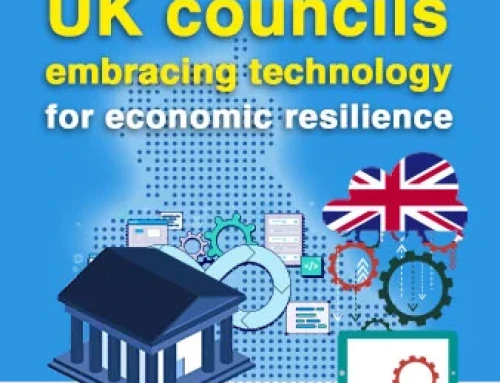How council mergers are improving service delivery challenges?
The role of unitary councils in alleviating economic strain
In the wake of economic challenges and fiscal crises, local government entities in the United Kingdom have been compelled to explore innovative strategies to navigate the storm. One particularly notable approach gaining traction is the consolidation of councils (council mergers).
This deliberate merging of local administrative bodies is proving to be a strategic move, not only in terms of streamlining governance but also as a robust crisis management tool to alleviate economic strain.
In this article, we delve into the significant role that council mergers play in addressing economic challenges, supported by real-world examples and pertinent statistics.
The economic landscape: Challenges and imperatives
Before delving into the specifics of council mergers, it’s crucial to understand the economic landscape that necessitates such strategic measures. Economic strains can manifest in various forms, including budgetary deficits, increased demand for services, and the need for more efficient resource allocation. Local authorities, burdened with the responsibility of providing essential services, are often at the forefront of these challenges.
The LGA estimates that councils face a collective £2.4 billion shortfall in budgets this year because of unexpectedly high inflation in staff pay, energy costs and contract prices.
Growing demand for children’s social care, sky-high inflation and increased wages have left reserves at an all time low. Adjusted for inflation, budgets are 35% lower than last year.
Council mergers: A tactical response
-
Streamlining resources for efficiency:
Council mergers provide an opportunity to pool resources, creating economies of scale that enable more efficient service delivery. By eliminating redundancies and consolidating administrative functions, merged councils can redirect saved resources towards essential services and infrastructure projects.
According to a study conducted by PricewaterhouseCoopers (PwC), the potential solution lies in merging district and county councils in each area into a unified unitary council, presenting an opportunity to realise substantial savings of £2.94 billion over a span of five years on a national scale.
-
Enhanced strategic planning:
Merged councils have the advantage of a broader strategic perspective, allowing for more effective long-term planning. The collaboration of expertise and the pooling of diverse resources contribute to a more resilient governance structure capable of navigating complex economic landscapes.
-
Debt consolidation and financial stability:
Economic strains often manifest in high levels of debt for local authorities. Council mergers provide an opportunity to consolidate debt, negotiate better terms with creditors, and achieve a more stable financial footing. This financial reprieve also helps the merged council to redirect funds towards key public services.
-
Enhanced revenue generation:
Financial difficulties are prompting UK councils to raise taxes in the upcoming fiscal year. The projected average Band D council tax for 2023-24 in England is £2,065, reflecting a 5.1% increase from the previous year, inclusive of precepts like adult social care. Among 153 adult social care authorities, 151 are expected to use up to 2% precept flexibility, adding £30 to the average tax bill. Regionally, London is expected to see a 6.2% increase to £1,789, metropolitan areas a 5.1% rise to £2,059, unitary areas a 5.0% increase to £2,139, and shire areas a 5.0% hike to £2,134.
Merged councils can explore new revenue streams and economic development opportunities more effectively. A larger administrative entity is better positioned to attract investments, foster business growth, and explore innovative financing models.
Overcoming challenges and ensuring community engagement
While the potential benefits of council mergers in crisis management are evident, it’s crucial to acknowledge and address challenges. Resistance from local communities, concerns about loss of identity, and potential service disruptions are common apprehensions. Successful case studies emphasise the importance of transparent communication, community engagement, and a phased approach to implementation.
How should councils approach future expenditure?
-
Prioritising core services:
In addressing future expenditure, councils are poised to adopt strategic measures aimed at optimising resources and maintaining essential services. One key strategy involves prioritising core services, a difficult yet necessary decision-making process exemplified by Birmingham City Council. Inevitably, councils will face the challenge of making tough choices, potentially reducing or discontinuing non-core services to ensure the sustained delivery of essential public services.
-
Additional support:
Seeking additional support is emerging as a prevalent approach, mirroring Birmingham’s initiative to seek strategic assistance from entities such as the Local Government Association (LGA) and software suppliers. This collaborative approach may become a norm for other councils, enabling them to leverage external expertise and resources to navigate financial challenges.
-
Funding models:
Embracing innovative funding models is another avenue councils will explore to secure necessary funds. This could involve venturing into public-private partnerships or engaging in community crowdfunding initiatives. By diversifying their funding sources, councils can create a more resilient financial foundation, mitigating the impact of budgetary constraints on critical services.
-
Digital transformation:
Efficiency and digital transformation are pivotal considerations for councils looking to optimise their operations. The integration of digital solutions can lead to streamlined service delivery, fostering efficiency and ultimately contributing to long-term cost savings. This approach aligns with the evolving landscape of public administration, where technological advancements play a crucial role in enhancing effectiveness.
-
Community engagement:
Moreover, councils are anticipated to reimagine community engagement as a means of identifying essential services and co-creating solutions with local communities. Strengthening collaboration with residents can provide valuable insights into community needs and preferences, guiding councils in making informed decisions about service priorities. This community-driven approach not only ensures a more tailored service delivery but also fosters a sense of shared responsibility and ownership among residents.
The future expenditure strategies of councils encompass a multi-faceted approach, involving the prioritisation of core services, seeking external support, exploring innovative funding models, embracing digital transformation, and redefining community engagement. These measures collectively aim to equip councils with the resilience and adaptability needed to navigate financial challenges while safeguarding essential public services.
Final thoughts: A path forward
The role of council mergers in alleviating economic strain cannot be understated. Through strategic consolidation, local authorities are not only weathering financial storms but are emerging more resilient, efficient, and strategically positioned for future challenges. As we navigate the evolving economic landscape, the success stories and statistical evidence supporting the positive impacts of council mergers serve as a compelling case for continued exploration and implementation of this crisis management strategy in local governance.





